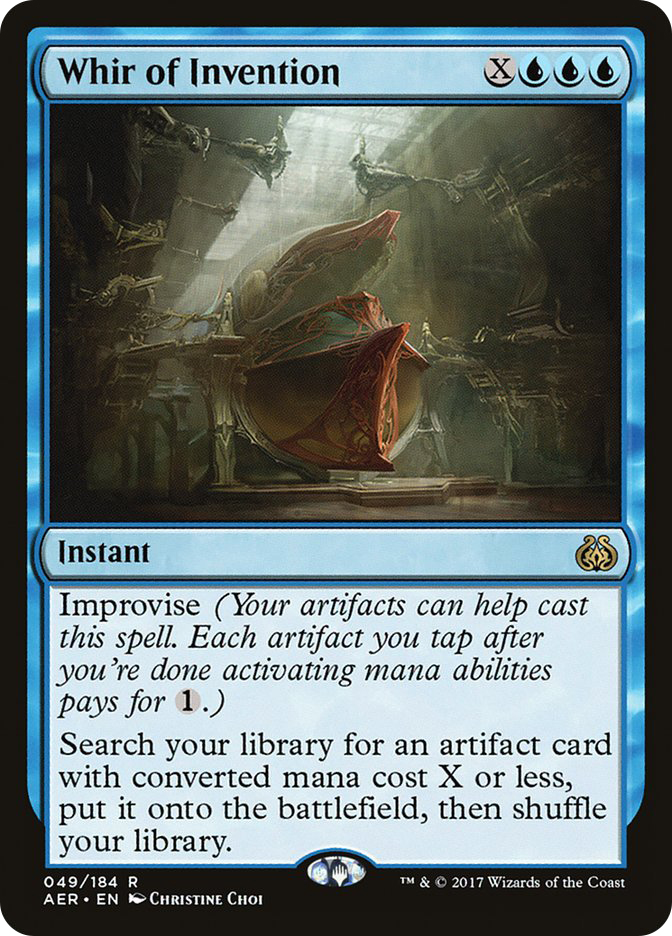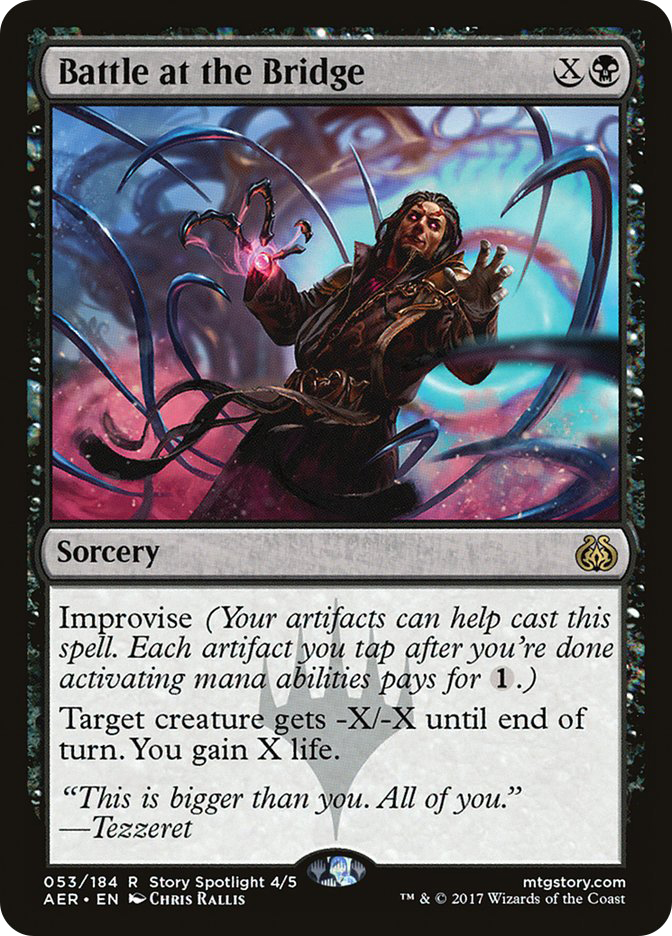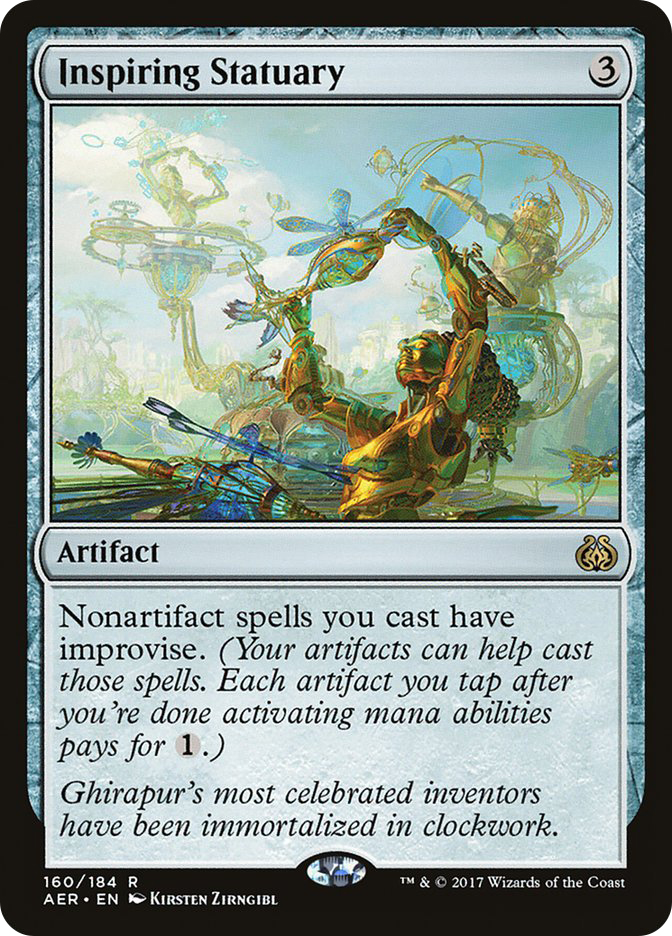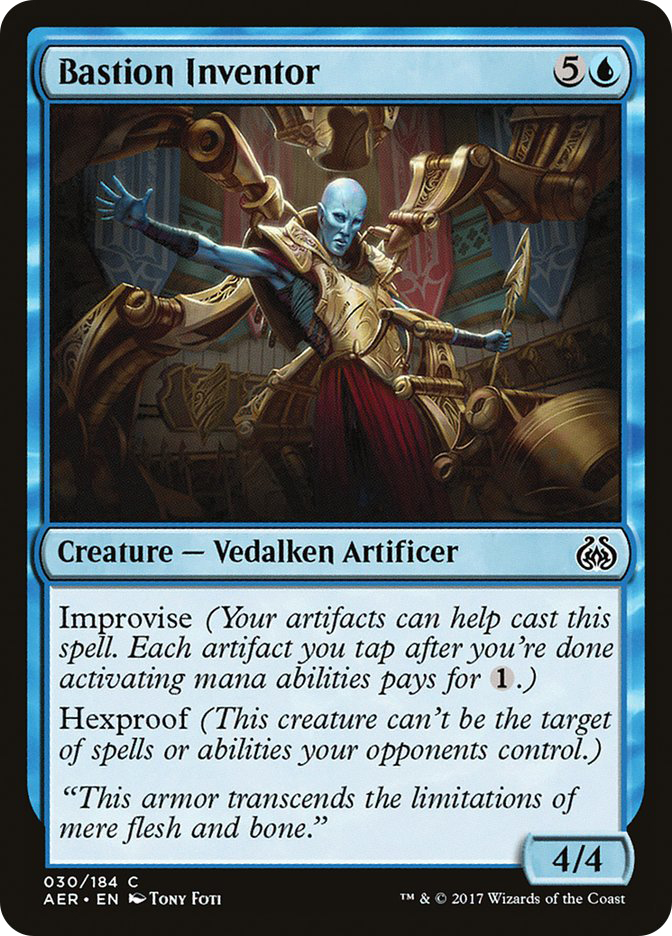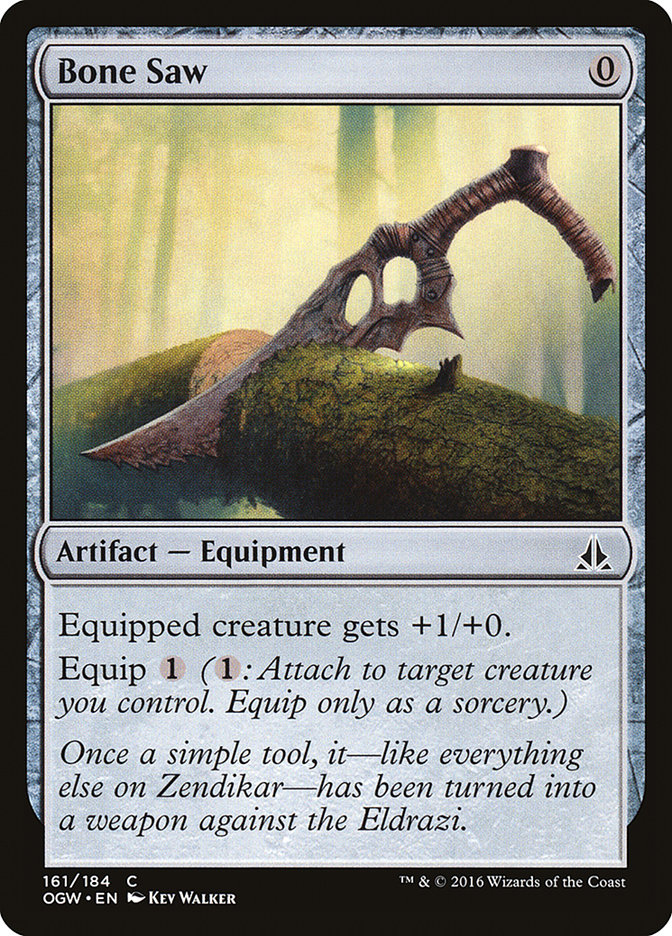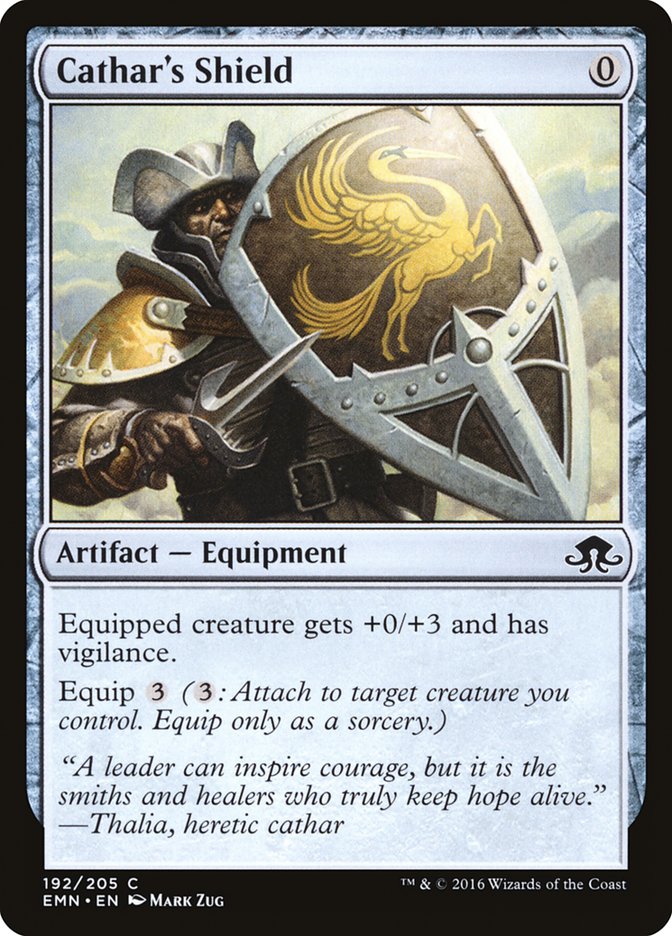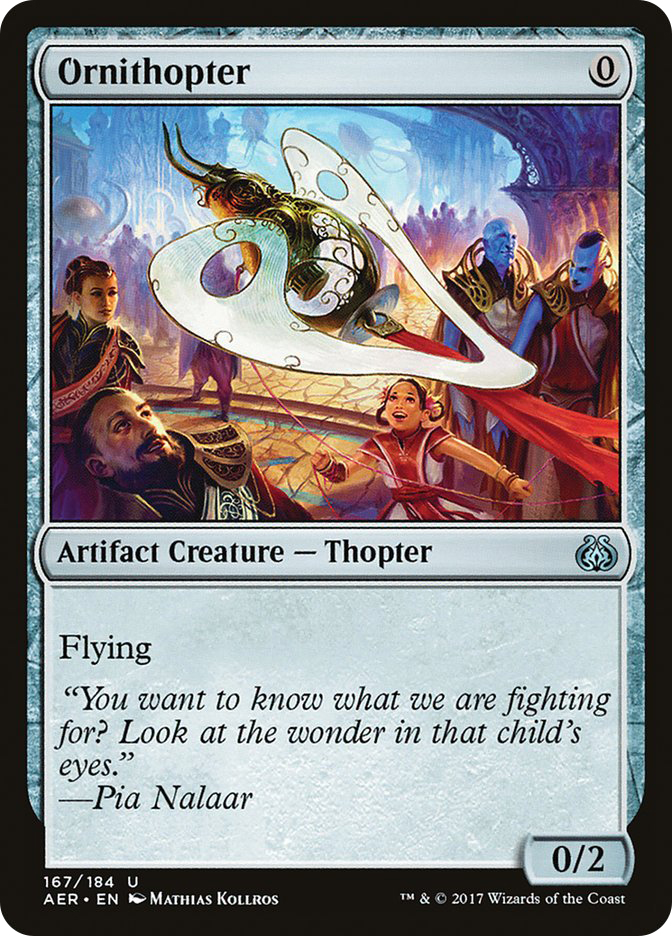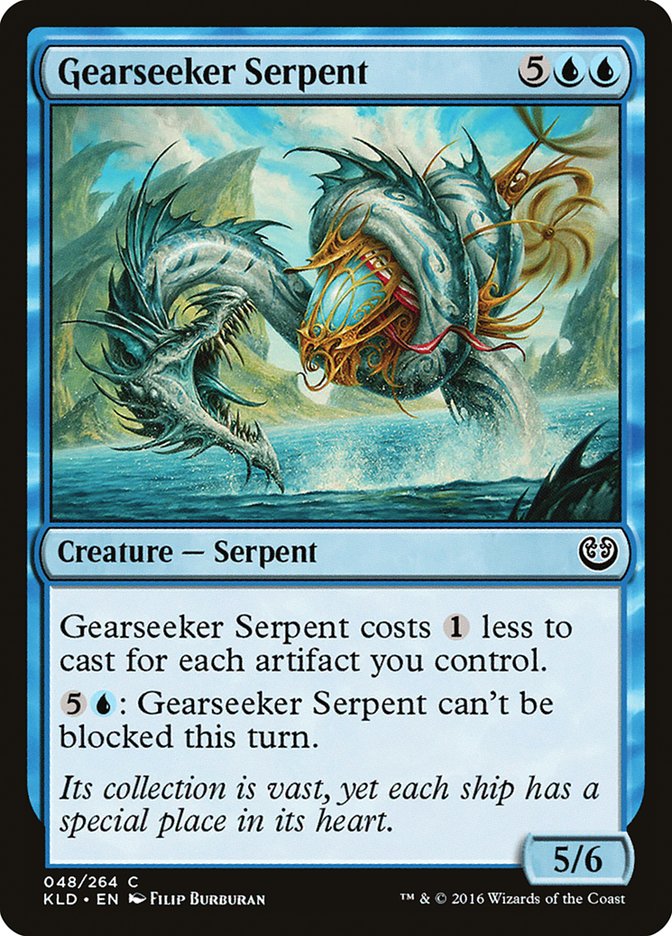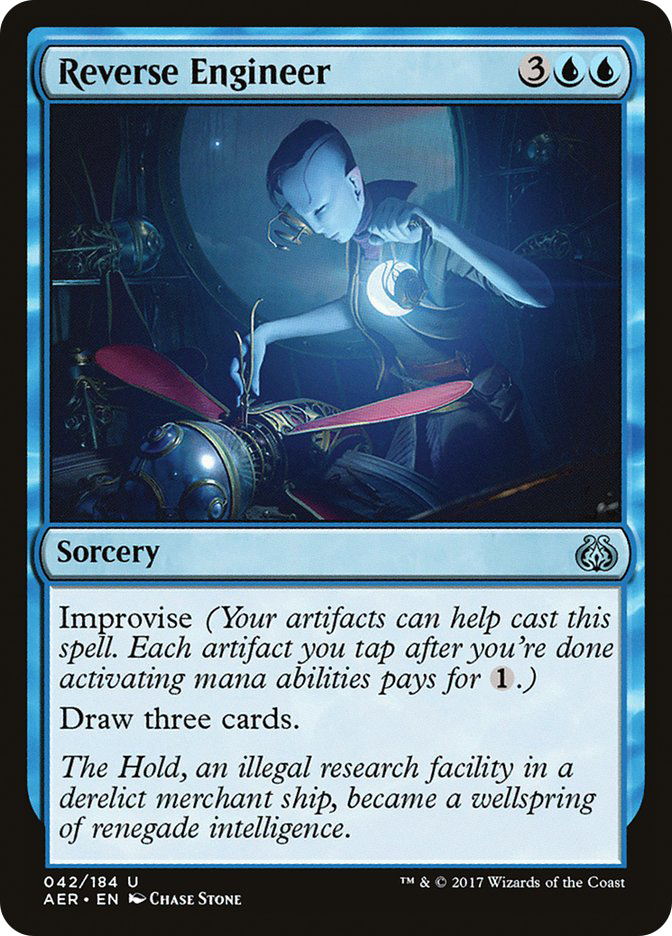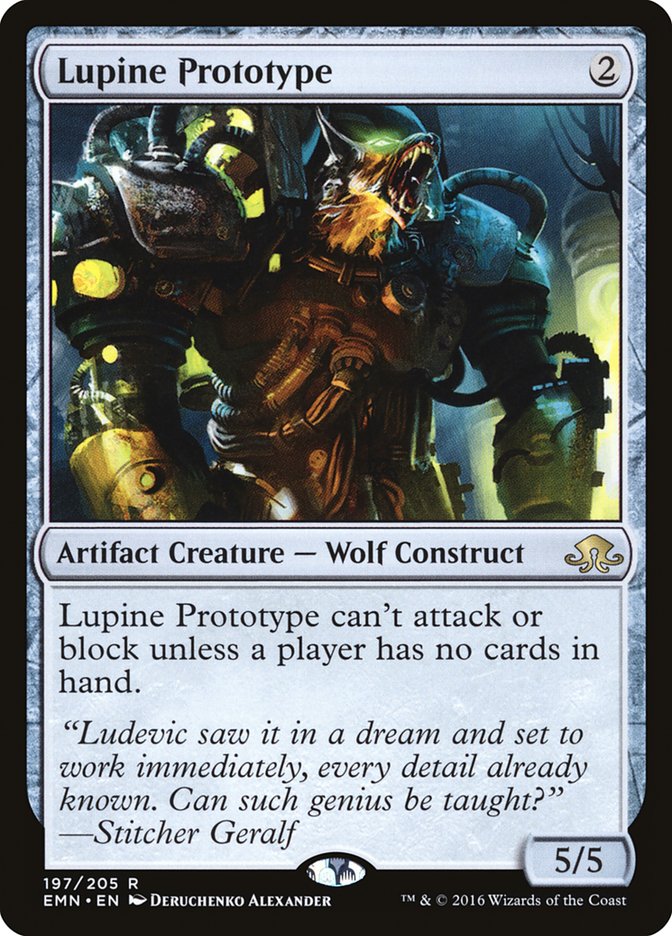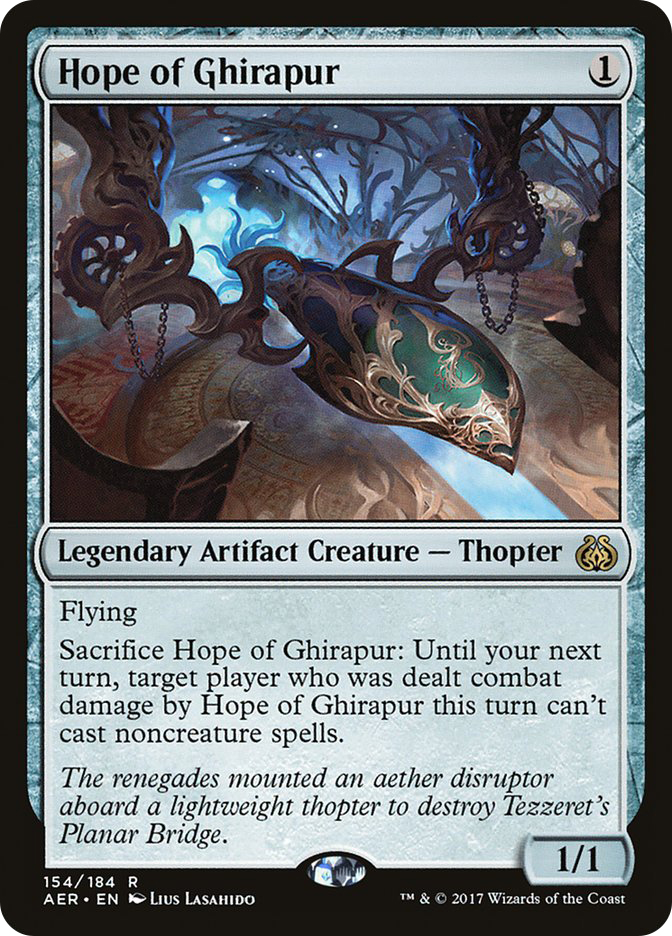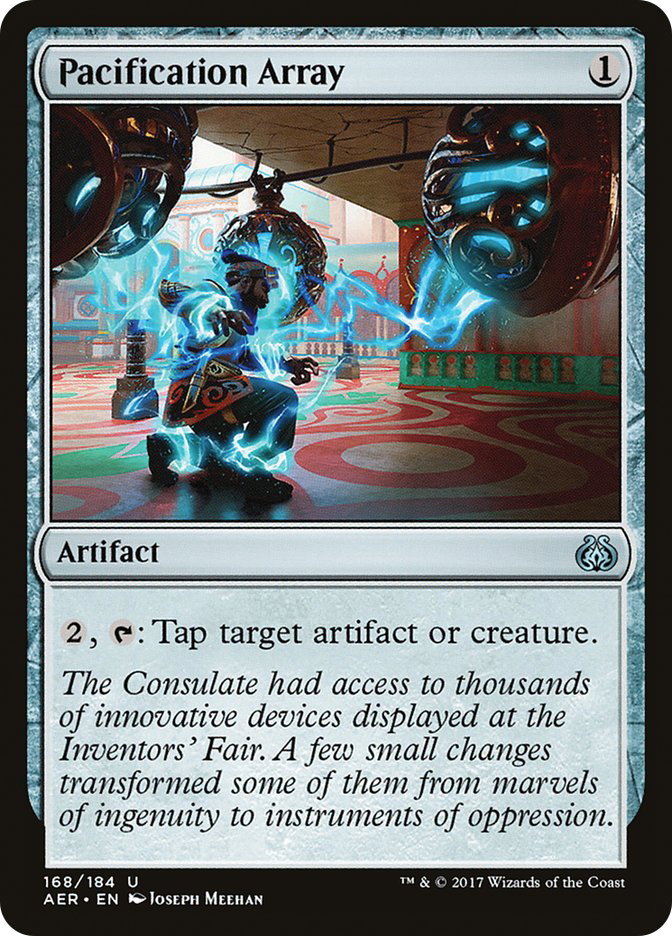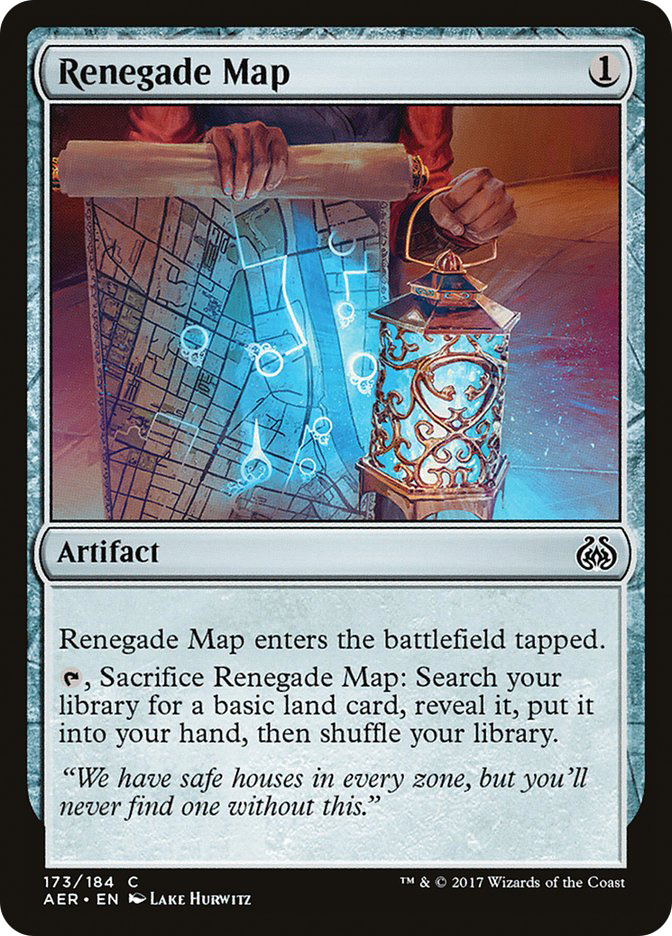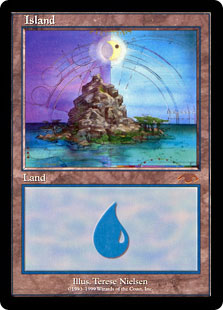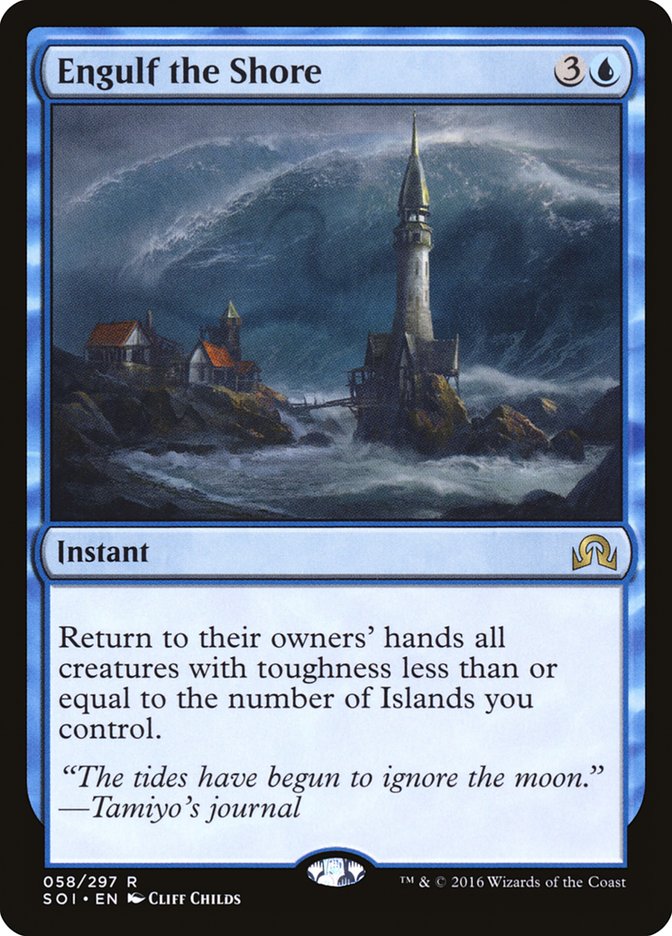It’s easy for Magic’s best and brightest players, bloggers, and writers to say “Buy the best cards,” “Play the best decks,” or “Test as much as you can.” Most of them do this full-time, or as their main hobby, at least. But people play Magic for different reasons, and those reasons don’t always involve an enormous commitment of time, money, or effort. That’s what’s nice about Magic; it doesn’t have to.
That’s right: you can play Magic without an enormous outlay of cash. Standard will continue to prove this. Some of the best decks that are evolving in this format have easily obtained cards, either by trade or by buying them. You can make a fun, reasonably competitive deck with just a bit of money. Two-color lands are as cheap as they’ll ever be, and once you’ve built up a base of cards, you can charge into any deck you like.
Still, many people don’t get into Standard because they don’t feel like it’s a good investment. The large supply makes the format-defining cards of Standard a bit less of a commodity than something like a critical Modern staple. Thus, people don’t like to invest unless they’re actively playing. They may even like Standard and find it an entertaining format; they’d just prefer not to hassle with a Standard collection, or even a single deck.
Standard has plenty of naysayers, but I’m here to put the money factor out of your mind. You can build a fun, competitive deck for today’s Standard without breaking the bank. Budget decks are a popular angle, but in many instances, they are dumbed-down versions of strictly better decks. Cards like Tranquil Expanse replace Fortified Village and multi-faceted threats are replaced with less flexible, more easily accessible alternatives. In the end, don’t think this is a terrible strategy, but it’s one that fundamentally betrays the idea of building on the cheap.
No, there’s a deck out there right now that won’t cost much, doesn’t take much trouble to get the pieces, and creates an opportunity for fast, fun, and exciting games. However, if we’re going down that path, we’re going to have to Improvise a bit.
Improvise is the newest iteration of cost reduction present in Aether Revolt. Similar to convoke, Improvise reduces the cost of spells by tapping a nonland permanent to help cast a spell. While Improvise doesn’t reduce color, it can still facilitate multiple spells per turn, and the spells that carry the mechanic can be pretty powerful.
Aether Revolt has several powerful Improvise spells, and some are already starting to see a bit of play. Still, the one that caught my eye first wasn’t a rare, or even an uncommon. It was a common with one powerful keyword: hexproof.
Hexproof is a strong mechanic. Shortly after its implementation, Geist of Saint Traft became one of Standard’s strongest cards. The Modern format has warped itself around cards like Slippery Bogle and Invisible Stalker. Even way back when, many decks couldn’t answer Silhana Ledgewalker and Moldervine Cloak. A 4/4 with hexproof isn’t groundbreaking, but a cheap, fast one is.
Bastion Inventor is big enough to survive early scrap with on-time cards from your opponent. This kind of untargetable pressure is enticing, but six mana would be impossible. To keep this spell fast enough to be relevant, we’d need some help.
These are Standard’s three zero-cost artifacts, and unless you’re going down the Servo path, these three cards are going to be essential to an Improvise strategy. In general, Improvise spells, much like convoke or delve before it, are only particularly strong if you can get a better rate for them than you would if you cast that kind of effect normally. For me, a 4/4 hexproof creature should cost three mana or less to be backbreaking. This means that you’d need to cast three artifacts and not do anything else on those first two turns without these. Zero-drops are critical to this deck, and Equipment cards have always been good on hexproof creatures.
Similar to Bastion Inventor, Gearseeker Serpent can also come out for a reduced cost, even allowing you to make it unblockable if needed. With this came reliability to get an undercosted threat into the game more quickly and keep the pressure on.
From here, we’d need to find the best one-drop artifacts that were as impactful as possible. Thankfully, we have a great, cheap draw spell to get us set up.
This feels a lot like Thoughtcast, and in Standard at least, this is a premium draw spell. One artifact makes it Concentrate. Two makes it a better Divination. Three artifacts tapped and you’re basically casting and cracking a Hatching Plans for free.
So far, these are all blue cards and artifacts. To keep that cost down, let’s aim to keep it just blue. Two-color lands are inexpensive right now, but Islands are still cheaper. Furthermore, because Improvise doesn’t pay color, we’ll still need readily accessible blue mana at all times.
Maybe…maybe this deck’s possible. Let’s throw something together and see how it goes. We know it won’t cost much.
Creatures (21)
- 4 Ornithopter
- 2 Chief of the Foundry
- 4 Lupine Prototype
- 1 Glint-Nest Crane
- 1 Foundry Inspector
- 3 Gearseeker Serpent
- 4 Merchant's Dockhand
- 2 Bastion Inventor
Lands (16)
- 16 Island
Spells (23)

This was the first try. Total SCG cost at the time I bought it? $14.82. That’s for the maindeck and the sideboard both, with the exception of the sixteen Islands. Which I already had.
I tested this against two opponents, one playing a B/G Aggro deck that continues to be popular from Week One of the SCG Open, and a Jeskai Saheeli Rai variant, both of which quickly decimated me without giving up a single game. Something was wrong, but thankfully, the answer was pretty clear: this was basically an aggressive deck with no pressure. It had no fire, no heat, and my opponent could do whatever they wanted without a problem. We needed cards that did more, cards that applied pressure, and cards that had a purpose besides reducing the costs of other permanents.
The first thing to go was all but one Cathar’s Shield. As neat as this was, it did nothing to apply pressure. The toughness boost and vigilance were nice, so I kept one copy. Consulate Dreadnought, similarly, was a bust. If I had six power worth of creatures, I’d just attack with them.
Let’s try this again.
Creatures (23)
- 4 Ornithopter
- 1 Chief of the Foundry
- 4 Lupine Prototype
- 1 Foundry Inspector
- 3 Gearseeker Serpent
- 4 Merchant's Dockhand
- 4 Hope of Ghirapur
- 2 Bastion Inventor
Lands (17)
- 17 Island
Spells (20)

Creatures
Merchant’s Dockhand that was cleverly designed to complement Improvise without having the keyword printed on it. This low-cost creature can hold Equipment, attack, and block as well as any one-drop, but in the late-game, you can hold up a counterspell and use this is as a Clue on steroids. If you have only one other artifact, it’s just drawing a card. With three other artifacts to tap, this is Dragonlord Ojutai’s trigger. Any more, and you can just about find whatever you want with the top X cards of your deck. Ornithopter, while certainly fuel for Improvise, can hold Equipment and get in the red zone, too.
When Eldritch Moon brought us this gem, I was working feverishly to figure out a way to break it. That block didn’t give us the chance, but this one did. While it’s an inert 5/5, you can Improvise with it, and with the cost reduction, having an empty hand is easy. While some cards in the deck seem to confound this plan, like Metallic Rebuke and Reverse Engineer, these should be fired off at their first opportunity to keep the pressure on. Sandbagging counterspells isn’t this deck’s style.
From here, Gearseeker Serpent and Bastion Inventor make up the bulk of our fighting force. Gearseeker Serpent and Bastion Inventor can be cast in the same turn, as Gearseeker doesn’t require tapping to get onto the battlefield. Being a 5/6 makes this card very difficult to kill; it’s out of range of Fatal Push and Grasp of Darkness, two common kill spells in the B/G decks running around these days.
Hope of Ghirapur was perhaps the biggest creature adjustment. While just a Flying Men in most instances, it does contribute to Improvise, but it can also apply pressure in combat or with its sacrifice trigger. Four copies seems correct here. If you draw an extra copy, smack them and sacrifice it. Your next one will keep the pressure on. Besides, I like the double-Bone Saw turn 1 with Hope of Ghirapur, equip turn 2 for three evasive damage a turn. It’s a build-your-own Delver of Secrets!
The two Foundry artifacts I found were great singletons, but I never ever wanted two. They were expensive for a deck with below-average land, and I found that wasn’t often the best thing I could do with three mana. I like Chief of the Foundry in matches without sweepers, as Ornithopters suddenly become live on an otherwise unassuming battlefield, so I slid extra copies in the sideboard.
Spells
Bone Saw is pressure and Improvise assistance bundled together. For years, Bone Saw and other zero-cost artifacts have been combo pieces, but this time, that one power boost on evasive creatures can make a difference in combat, too. If Shuko were legal, I’d play that too. Stitcher’s Grasp came into replace a couple of do-nothing Cathar’s Shields, again to apply more pressure. With Cathar’s Shield, Stitcher’s Grasp won’t tap the creature holding it when you attack, too. +3/+3 is a big bonus; it keeps your creature out of Shock and Grasp of Darkness range, too.
Pacification Array was blue’s best hope of permanent removal. This kind of effect is quite inexpensive now; compare it to Trip Noose. A full set works together to maintain a lot of battlefield control, making more room for our big dumb bruisers to crash in.
Renegade Map is a neat trick. Much like Traveler’s Amulet or Wanderer’s Twig, this artifact allows exceptionally effective basic land search, as long as you’re willing to wait a turn. For this deck, the decision tree is usually quite simple. Cast Renegade whenever you have a free mana. If you have an Island to play on your turns, don’t crack it. If you don’t, crack it. It can act as an extra land for Improvise, and putting an extra Island in your hand means keeping your Lupine Prototype offline for an extra turn.
Renegade Map can also instantly provide you a land to discard to Key to the City while functionally maintaining an empty hand. Speaking of which, Key to the City is the exact card we need when their blockers outnumber our Pacification Arrays. It completely changes combat; these creatures are large enough to one-shot planeswalkers, and with an unchecked Key to the City on the battlefield, the ticking clock can get very loud.
Lands
Seventeen Islands. That’s it. Any utility lands would raise the cost and complexity, and you’d be surprised how often you just need blue mana without any fuss. Renegade Map provides three pseudo-lands, and nine spells in this deck cost no mana at all. It might not seem like enough, but trust me, you don’t want more than this.
Sideboard
Being only blue means that you have to get creative when handling things once they’re off the stack. The first big change was Imprisoned in the Moon, the only reasonable answer I could think of for such troublemakers as Saheeli Rai; Gideon, Ally of Zendikar; and most any other planeswalker or creature that’s giving you trouble. The mana it provides is not very relevant. Sadly, Felidar Guardian can cleanse it, but that problem’s for another day.
Horribly Awry and Ceremonious Rejection both handle this deck’s biggest fear: Walking Ballista. This card singlehandedly had me over a barrel in my G/B Aggro match. Horribly Awry counters Felidar Guardian and most G/B creatures with the exception of Verdurous Gearhulk, and the exile clause is occasionally relevant.
Aligned Hedron Network seems like a reasonable way to beat Tireless Tracker and other high-powered creatures, as does Engulf the Shore. With all Islands and the high-toughness on my threats like Lupine Prototype and Gearseeker Serpent, I’ll often keep my threats.
Now, with the deck retuned, let’s take it into battle again.
I fought a total of five matches with this deck; two were against Saheeli Rai decks, two were against G/B Aggro again, and a final match was against G/W Humans. This deck only dropped one game to Saheeli Rai this time around, with four games played total. The pressure was much higher, and I could see it on my opponent’s face. They were under the gun to get their Felidar Guardian combo online with Serpents and Inventors smashing at the door. I got one G/B Aggro match and lost the other after a close Game 3 where I was defeated at the hands of, you guessed it, Walking Ballista. I smashed up the G/W Humans deck without much trouble at all.
In short, this deck was very entertaining, surprisingly consistent, and delightfully inexpensive. After the adjustments, I was only out a total of $18. Eighteen dollars isn’t much. One Walking Ballista will set you back that much, and in my opinion, this is money much better spent.
The deck felt very close to its ideal form, and I think the metagame will shape the deck from here on. Blue and colorless threats do abound, and I think the “color combo” is deep enough to dig up answers to Standard’s biggest problems. A card or two may change in the maindeck, and the sideboard might shift a bit too, but this list is FNM-ready. If you have other suggestions or musings, I’d love to hear them. The paltry cost of this deck means I can keep it put together on the side, and I’ll be reaching for it each time I need a fun match.
Improvise is a deep mechanic, and this deck only hits one color. Where are you improvising?


